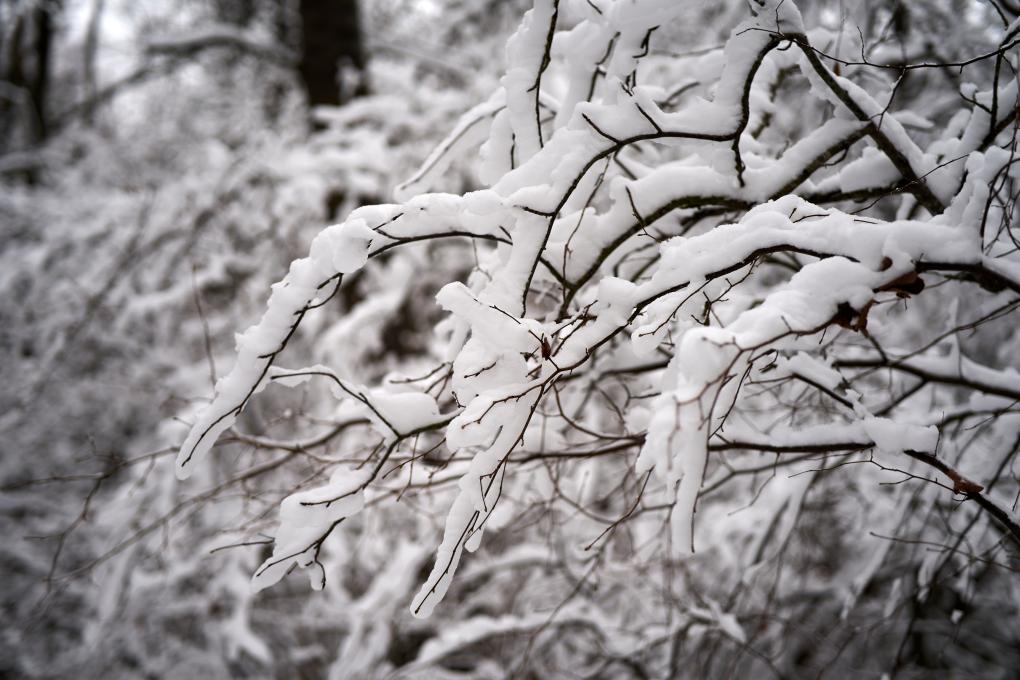‘Snow was piled up to the top of the door:’ A look back at the worst winter storm in state history

The temperature was about 40 degrees (above zero), it had been raining, and snow was beginning to melt when Central Ohio residents prepared for bed on January 25th. If they were able to sleep through the gale-force winds that whipped up, they woke up the next morning to a blinding blizzard with gusts up to 69 miles an hour and wind chills approaching 60 degrees below zero. This became known as the “Great Blizzard of 1978” – the worst winter storm in Ohio history.
A freak collision of two low-pressure areas 800 miles away drove the storm north from Texas like a speeding freight train. As it approached Central Ohio, temperatures dropped, and so did barometric pressures– so low that in Cleveland, it equaled that of a Category 3 hurricane. And though no more than five inches of new snow fell, it landed on top of a previous 17-inch snowfall. The temperature, which had risen briefly, created a solid inch of ice between the two layers.
Ken Prater and his wife Flo were living in a subdivision near Darby Creek. He remembers the biting cold. “We woke up about 5 a.m. to find that the power was out, the wind was howling, and the snow was blowing almost sideways – right toward us.” Ken soon discovered that a neighbor at the other end of his development was firing up his wood-burning stove – one he had bought for mostly decorative purposes. “About 10 a.m., Flo and I joined 25 other neighbors, all lining up in front of Ed Parsons’ home, hoping to get warm,” Prater recalled. “Ed burned all the firewood he had and then brought up lumber he had planned to use for a basement project and burned that, too.” Ken and Flo later learned that the temperature had dropped that morning by 21 degrees in just one hour.
BROUGHT TO YOU BY
The fierce winds drove those five or so inches of new snow into banks and walls up to 15 to 20 feet high. The Ohio Turnpike was closed. Thousands of Central Ohio residents lost electricity, and most streets and highways were impassable. About half of the 51 Ohioans killed by the storm either froze to death in their cars or froze to death after ditching their cars and trying to walk to safety.
Andy Thress, at the time a student teacher finishing his studies at Ohio State University, remembered trying to open the front door of his northside apartment. “I couldn’t do it,” he said. “Snow was piled up to the top of the door. I could get, out from the side of my apartment, but not the front.”
The storm prompted a statewide emergency, as officials struggled to find shelter space. Beth Ervin and her husband, who lived in a west-side apartment complex,first tried staying warm by piling on more and more blankets. “But when this big, covered truck pulled up in front,” she said, “I went out into the wind and snow and climbed in the back. We felt like refugees. We were taken to Doctors Hospital West, where we were given watery chili and blankets and slept on the floor of what must have been the cafeteria.” Ervin’s husband had decided to stay home with their dog and keep an eye on the place. “He later told me it was so cold inside the apartment that our dog’s water bowl froze,” she added.
These “refugees” and thousands of others throughout the area had no idea when the storm would stop, the roads would be cleared, the power would come back on or even how they would make it back home. Schools, retail stores, offices and other businesses closed. Ohio State University called off classes for the first time in its history.
Ervin’s downstairs neighbors had also been taken to Doctors West. “They contacted friends of theirs in Lithopolis, who were able to get through to us and take us to their home for the night,” Ervin said. “The next day, they drove us back to our apartments. The parking lots had been cleared, and I remember walls of snow that must have been 10 to 12 feet high.”
But the “Great Blizzard of ‘78” wasn’t confined to Ohio. The “bomb cyclone,” as we would call it today, picked up intensity from Georgia, roaring through Tennessee, Kentucky, Indiana, Illinois, Ohio, West Virginia and more.
Back in Ohio, near Mansfield, a truck driver sat helplessly as he became stuck on the highway and his rig was quickly covered by blowing snow. He remained trapped in his cab for five days with nothing to eat but a package of crackers. A rescue helicopter finally spotted a radio antenna peeking above the two feet of snow atop his cab.
Of course, emergency declarations couldn’t keep first responders and hospital workers from their jobs. Dee Debenport was 25 at the time and living with two girlfriends in a condo on Columbus’ far west side. “I remember waking up that morning and thinking, ‘Yay! A snow day! No work!,’” she said. “But I soon learned my reverie was a bit premature. My phone rang, and I was told to pack an overnight bag, that the National Guard would be picking me up within the hour.” And that wasn’t the worst of it for Debenport. “We learned along the way that this was a one-way trip. We would have to find our own way home. But I was lucky. I had to work for only 16 hours and was able to catch a ride home with the husband of a nurse I worked with.”
Once the snow stopped and the winds died down, it took about a week for things to get back to normal. Air travel resumed in most Ohio cities in about two days. Most schools and businesses reopened within a week. And many families considered themselves lucky. Because the storm hit so early in the morning, school officials were given time to call off classes for the entire day. If the snow had started falling later, countless children, teachers and administrators would have been stranded at school.
While the blizzard was considered a disaster for most, some were still able to smile and do the best they could with a very bad situation. Ed and Barb Elberfeld, of East Beck Street, watched in wonder as the snow piled to the top of their six-foot fence. On one of the first evenings of the disaster, they decided to take a little walk. “We were a lot younger then,” admitted Ed. “So, we struck out for Livingston Avenue from our German Village home. Right as we turned the corner onto Sixth Street, we spotted the only sign of life – the lights of a little ice cream shop.” Standing behind the walk-up window of the local “Tastee Freez” was the store’s manager. Ed said, “I’m sure he was trying his best to sell just one more ‘Freezee’ before he called it a night!”
Want to read more? Check out our print publications, (614) Magazine and Stock & Barrel. Learn where you can find free copies of our newest issues here!
BROUGHT TO YOU BY


